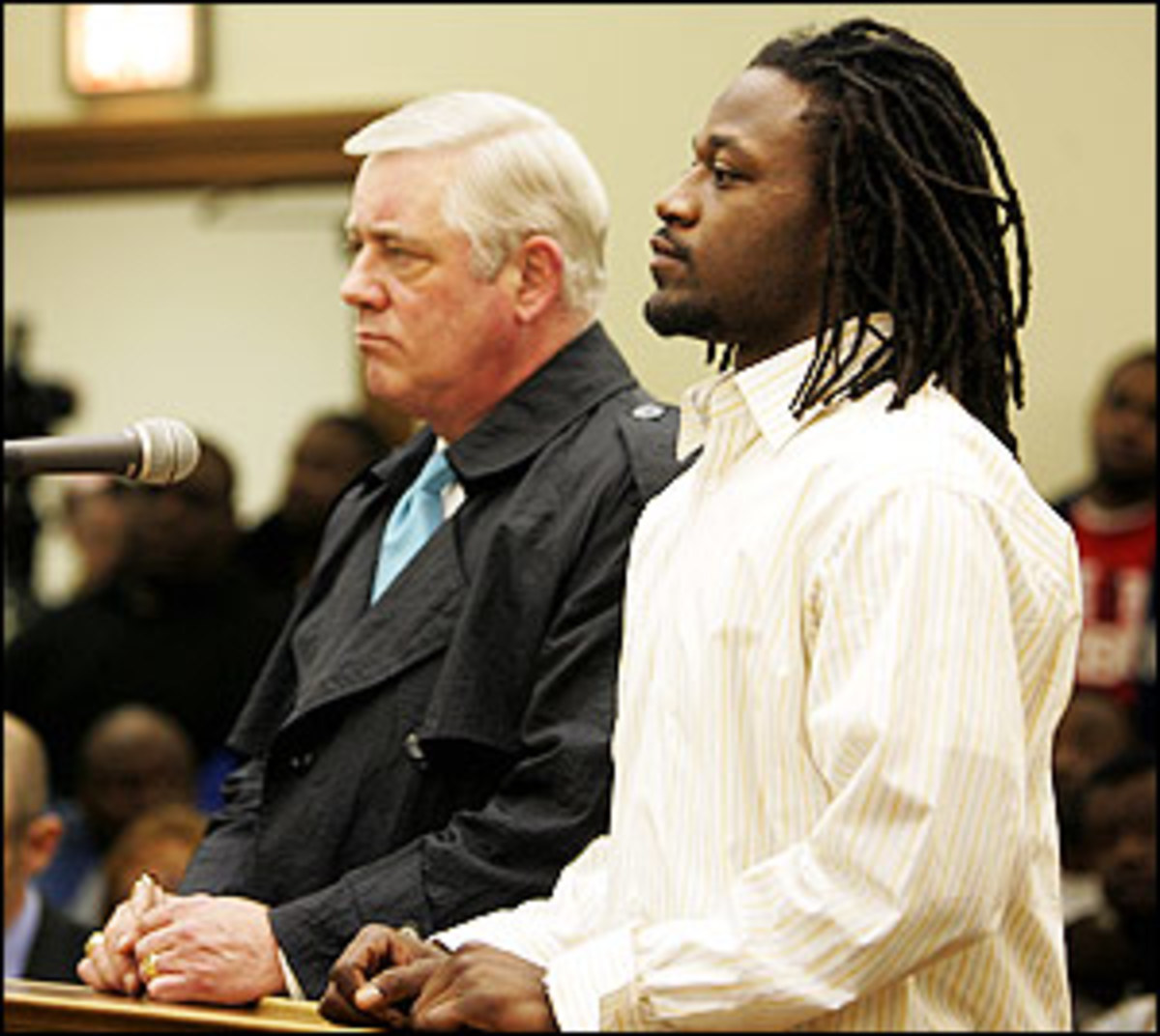Image is everything


I didn't believe the NFL was on the verge of a major image problem until I watched a recent interview with Tennessee Titans cornerback Adam "Pacman" Jones. Before that, I doubted a string of off-the-field issues could threaten the league's popularity. After it, I realized the fact that a discussion with a diminutive, dreadlocked, drama-prone football player could hold my attention for longer than 10 minutes had to say something about the state of the NFL. When problem children like Pacman can dominate the headlines this long, they eventually can taint an entire league.
If you need evidence, consider what's happened to the NBA, a league that's still recovering from an image problem that can't be fixed with a dress code and a rule to keep recent high school graduates out of the draft. Think about Major League Baseball and all we've learned about performance-enhancing drugs because of the issues in that sport over the last few years. The NFL isn't that far away from facing its own public relations crisis. The league was once so dominant that it could grind through any potential trouble simply because fans love their teams but those days have passed. The longer the bad news lingers in the headlines, the more people will start wondering why these guys can't control themselves.
Of course, opponents to this argument contend it's just a small group of players causing all the problems. One NFL Players Association representative recently told me that only three percent of the league (or 60 out of 1,920 players) has had any off-the-field trouble within the past 12 months and that nobody is talking the good other players are doing. What that argument fails to address is that it is usually a small percentage of players who are creating the trouble. But the unwillingness of people to proactively address what those actions could mean to the majority of players that ultimately leads to more concerns.
This is why I like how NFL commissioner Roger Goodell is approaching this matter. He sees exactly where it could lead and he's taking the attitude that he's not going to govern over a potential loss in popularity for his league. When he started talking about a conduct policy that could include the possibility of banishing players from the league in severe cases, you knew the guy wasn't fooling around. And to be honest, I don't blame him. Just look at some of what Goodell has had to deal with since succeeding Paul Tagliabue last year.
There's Pacman and his latest run-in with the law. There's Cincinnati Bengals wide receiver Chris Henry and all the problems with several of his teammates this last season. Goodell already has had to issue a five-game suspension to Titans defensive tackle Albert Haynesworth for stomping on the face of Cowboys center Andre Gurode and he's also had to deal with the legal trouble of Bears defensive tackle Tank Johnson. Throw in the recent scuffle in Las Vegas between Miami linebacker Joey Porter and Bengals offensive tackle Levi Jones -- which sounded like downright silliness -- and you can see why Goodell is anxious to drop the hammer on somebody.
Goodell is facing the type of issues that make any commissioner cringe. He's in charge of the most popular sport in the world and the players are giving the public more reasons to talk about thuggish, spoiled athletes who make too much money and don't appreciate their opportunities. He also can't be thrilled about having to deal with this during the offseason. Some of these incidents didn't seem so bad during the regular season because fans could focus on games. But now that a couple months have passed since the Super Bowl, there's too much time for all these issues to fester.
That's too bad for Goodell because the offseason has become nearly as essential to the NFL's popularity as the regular season. Dedicated fans now follow reports from the league's scouting combine with undeniable zeal. They can't wait for free agency to start and we all know how crazy they get for the draft. Even the announcement of the league's schedule -- the schedule for God's sake -- gets played up as major news. The point here is that even before the anticipation of training camp builds, the desire for any type of league-generated information is insatiable.
But now there are different kinds of headlines and the league would be wise to realize that such issues won't go away easily. The times simply have changed too much. There are too many media outlets now, too many fans who love their message boards, too many people willing to pass judgment on stories before all the facts have been revealed. To be fair, there are also too many coaches who are willing to look the other way when they can get their hands on a Pacman Jones or a Chris Henry, especially because those coaches believe they can handle such headaches, even when the warning signs are clearly visible.
This is why it's the right time for Goodell to take a stand. The NBA waited too long to address its image problem and you see where it got them. Major League Baseball tried to ignore its steroid problem until it eventually grew out of control. And if the NFL isn't careful, it will someday realize a valuable lesson that the higher-ups in those other leagues surely understand: No matter how popular your sport may be, it still can be frighteningly easy to lose the confidence of a once faithful fan base if the news becomes too negative.
